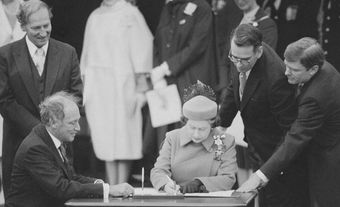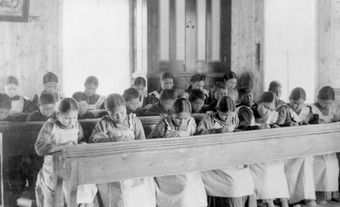Guarantee Act, 1849, conceived by Francis HINCKS and carried in the Legislative Assembly of the Province of Canada, established the principle of government assistance to railways. Under the terms of the Act, any railway more than 75 mi (120 km) long was eligible for a government guarantee on the interest of half its bonds as soon as half the line had been completed.


 Share on Facebook
Share on Facebook Share on X
Share on X Share by Email
Share by Email Share on Google Classroom
Share on Google Classroom


